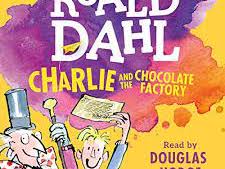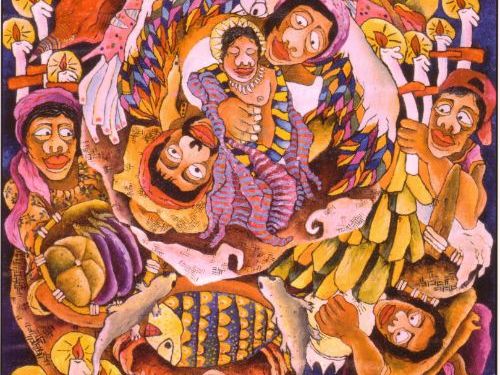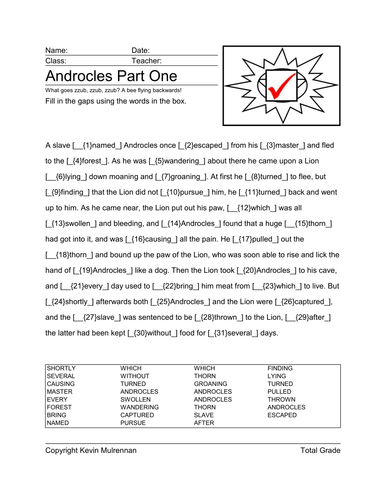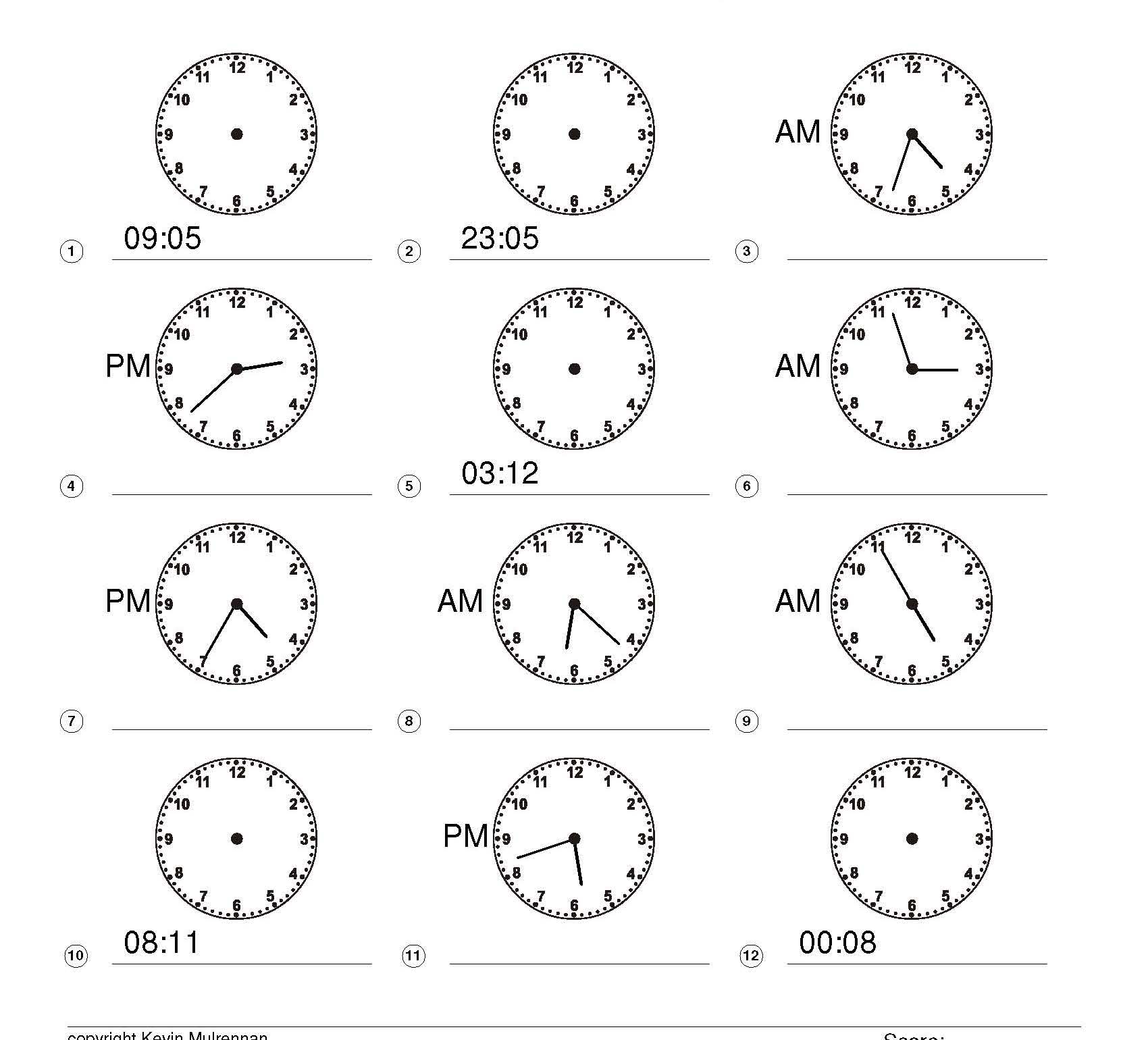406Uploads
123k+Views
41k+Downloads
English
Sale

Years 1 to 4 Complete Year's Religious Studies R.E. Planning
For all years 1 to 4 complete planning all terms.
Easily adaptable up or down, so will save you hours.
Catholic in flavour but other religions included.
Contains powerpoints, planning, worksheets, info etc.
Why not look at the bundles. Incredible value and it’ll save your precious Sundays.
Ideal if you have been chosen to deliver R.E.
N.B. You will need to spend some time organising as I am retired. Also not a great deal of year 2 stuff. If you want superorganised stuff, please look at my RE powerpoint stuff,
sample planning :
Learning and growing as the People of God:
Short-term Planning Unit I – Easter
Most children will know that the four Gospels contain accounts of the Resurrection of Christ. They will be able to understand the transforming effect this had upon the disciples. The children will know that the Ascension reminds Christians of the promise of Christ to remain always with them.
Less able children will be able to recall parts of the Resurrection story from some of the Gospels.
More able children will have a greater understanding of the importance of the Resurrection for Christians today and of their belief in the presence of Christ in the Church and in their lives.
Start date: Finish Date
Additional details including groupings, differentiation Vocabulary and
Key Questions Resources Prayer
Revise with children previous learning about the Church’s celebration of Easter.
Recall that it is a season of fifty days and revise some of the colours and symbols of the season that are used in the Church’s liturgy.
Activity:
In groups - give children the colours and the symbols to match.
White Easter light
innocence
purity
joy
triumph
glory
Red Feasts of the Lord’s Passion, Blood and Cross the Passion
blood
fire
God’s Love
martyrdom
Palm Sunday
Purple Good Friday penance
humility
melancholy
Gold Easter joy
Children to read one of the four Gospel accounts of the Resurrection:
Matthew 28: 1-15, Mark 16: 1-17, Luke 24: 1-43, John 20: 1-21
Group Activity:
Must - Highlight the words and actions of the disciples and the women and the words and actions of Jesus.
Should/Could -Create a resurrection appearance table. Include in the headings: What the disciples were doing, what they saw, and what Jesus said and did.
(Use the above Gospel accounts to fill in the table).
Plenary:
Children to imagine that they are about to meet somebody who had never heard of Jesus before. What would they tell this person about the resurrection? What would be the most important information that they would need to pass on?
What were the words and actions of ____ at the resurrection of Christ?
Markers Remind the children that prayer time is an
important opportunity for us to recognise
the presence of Jesus in our lives.
Provide moments for silent prayer. Use
music and appropriate Easter focus,
Use the Resurrection and Ascension
stories during Collective Worship.
Other links/Homework
Sale

Literacy Ideas Talk For Writing Wolves Emily Gavett
Nice powerpoint and notebook files and great grammar word document that you can use for display.
Sale

Charlie and the Chocolate Factory Planning Roald Dahl Literacy
Three weeks great planning. Don’t expect lessons on Charlie. It’s report writing in English using Charlie with powerpoints etc
Great powerpoints
Zip file has more. I’ve put some example stuff on to give you a flavour.
Introduce the new unit and read the writing outcome with the children.
Complete a skills audit verbally. TTYP – what skills do you already have that will help you to achieve the outcome? What skills do you think you will need to revise? Are there any completely new skills you will need?
Introduce the focus text. We know a lot about Roald Dahl from our biography unit. Has anyone ever read ‘Charlie…’?
Seen the films?
Explain that we need to know the story line and the characters, so we are going to spend today’s lesson using the 2005 film as a visual text. The rest of the week will be spent comparing the visual text to the written text and completing various activities and pieces of writing.
Become familiar with the story by using a visual text.
Use both visual and written texts to analyse character and setting descriptions. Finish any of the DVD which we didn’t finish yesterday.
Use the written text to read the character descriptions of Charlie, his parents, grandparents and the four other winners of golden tickets.
Activity One
Come back together, discuss and put information on working wall.
Repeat with setting descriptions.
Look at a still of Charlie’s house from the film and read the setting description for it.
Look at the still from the ‘meadow’ in the chocolate factory and read the description on pages 87-90.
Activity Two
Revise features of journalistic writing.
Compose a newspaper article using the correct form and language.
Working in pairs, children to sketch a story mountain onto a whiteboard. Children to then summarise ‘Charlie…’ using one or two sentences for each section of the mountain.
Come back together and discuss.
Read chapter five of the text. What main event is happening? The announcement of the golden ticket competition.
Watch 14:28 – 15:44 – how does the film embellish the details given in the book?
Explain today’s task, you are a senior news reporter for the ‘International Herald’ a newspaper which is published in many different countries, many different languages all over the world. Your editor has asked you to write a newspaper article about this event. Your report will be published the day after Willy Wonka’s signs went up. You will be reporting on the competition, the prizes and the mania sweeping the world.
TTYP – what are main features of a journalistic piece of writing?
Come back together and list for the working wall:
Headline, paragraphs, subheadings, quotations, orientation, 5 ws, past tense, direct, formal, balanced etc.
Brainstorm some headlines for our article.
List the 5 Ws on the working wall.
Give each child a checklist and an inverted pyramid.

Free Freebie Good Samaritan Lesson Simple and Effective for Year 4 R.E. Literacy
Got me a job so must be reasonable!
A simple lesson plan, worksheet, powerpoint.
Great for discusiing with pupils.
I have plenty of maths, literacy, languages and Literacy stuff so have a look after downloading this freebie.

Christmas Powerpoint Free Freebie Lesson Taster Advent Religious Studies
A freebie.
A nice powerpoint on the religious aspect of Christmas.
I’m hoping to interest you in buying my series of Christmas lesson on R.E.

Aesop Fable Cloze Test Androcles Classics Latin
A cloze test on an Aesop fable.
If you like this one I have a collection in my shop.
You get many, many more of them at a reasonable price.
Great timefiller for Froday afternoons or homework.
If you like the product, please leave a good review, especially as it’s FREE! Thank you!

Free Mega English Christmas Wordsearch Year 1 to Year 6
Tons more great resources at Auntieannie’s shop.
I specialise in Primary school stuff mainly.
Please have a look.
Tons of Literacy and Maths lessons and resources.
Religion a speciality too with a smattering of Humanities.
You can get planning for indivisual years and terms too.
Bundles offer incredible value. Lots of self made sheets.
Thanks for looking!
Sale

Teaching Resources worksheets Literacy Crosswords KS2 English TEFL
I have designed 100 worksheets on Literacy crosswords for primary school children. I have used common English words. Ideal for 11+ preparation. Ideal for Literacy. Ideal for people learning English. Answer sheets are provided for all worksheets.
Sale

Teaching Resources 100 worksheets Literacy Wordsearch KS2 English Language
I have designed 100 worksheets on Literacy word searches for primary school children. A wide variety of words used. Plenty of different directions to keep the kids guessing. I have used common English words. Ideal for 11+ preparation. Ideal for Literacy. Ideal for people learning English. Answer sheets are provided for all worksheets.
Bundle Sale

Bundle Year 5 Literacy Planning Autumn Term KS2 Greek Myths & Times Tables Sheets
A great bundle for year 5.
This is a zip file containing Literacy planning for a year 5 class (Autumn term).
Plus some great sheets on testing Times Tables.
Pupils have to fill in the gaps in various grids I have designed. All answers provided.
It consists of 14 short term plans I designed. There is one Literacy lesson per day.
You will get 14 Microsoft Word documents. They are based on the Greek myths.
I’ve also included for free some extra teaching materials that you can use. I’ve included too 3 medium term plans , one for each term). These cover plans and ideas not just for Literacy, but other subjects as well.
I’ve also included an extra week from the next term. Feel free to use it to plug any gaps.
This will help you do your own planning. Feel free to cut and paste into your own school’s plans.
Ideal for someone who had to do a term’s supply like I had to do.
Please bear in mind:
every school is different. My plans assume you have the aide of a TA, but this is not essential. There is no differentiation in the planning. Everyone does the same thing to the best of their ability.
you may want to add your own detail. These are short term plans remember.
I have used walts and wilts. Your school may do something different.
A very few number of weeks have a small gaps for things like tests and inset days. Use the extra week one planning for the next term (included for free) if you wish.
Bundle Sale

Bundle Year 5 Literacy Planning Autumn Term KS2 Greek Myths & Maths Shopping Questions
A great bundle.
This is a zip file containing Literacy planning for a year 5 class (Autumn term).
Plus great sheets on calculating the cost of shopping items. All answers provided.
It consists of 14 short term plans I designed. There is one Literacy lesson per day.
You will get 14 Microsoft Word documents. They are based on the Greek myths.
I’ve also included for free some extra teaching materials that you can use. I’ve included too 3 medium term plans , one for each term). These cover plans and ideas not just for Literacy, but other subjects as well.
I’ve also included an extra week from the next term. Feel free to use it to plug any gaps.
This will help you do your own planning. Feel free to cut and paste into your own school’s plans.
Ideal for someone who had to do a term’s supply like I had to do.
Please bear in mind:
every school is different. My plans assume you have the aide of a TA, but this is not essential. There is no differentiation in the planning. Everyone does the same thing to the best of their ability.
you may want to add your own detail. These are short term plans remember.
I have used walts and wilts. Your school may do something different.
A very few number of weeks have a small gaps for things like tests and inset days. Use the extra week one planning for the next term (included for free) if you wish.
Sale

Year 3 Planning Spring Literacy Numeracy Ref A
Important! If you’d like to buy the whole year’s planning (Autumn, Spring and Summer) you’d be better off buying my bundle.
This is planning for year 3 for a Spring term.
Plenty of great material here that you can adapt and cut and paste into your own school’s model.
After decades of teaching I’m retired from teaching now. I’d like to help the younger generation so I’m putting my plans online. I hope your Sundays will be made a little easier by cutting and pasting allowing you more free time.
You get:
Literacy planning e.g. Myths and Legends, Poetry (language play) 9 weeks worth
Numeracy planning 11 weeks worth
Creative curriculum (a bit)
RE (a bit - I taught mainly in Catholic schools so feel free to ditch this if you please)
Science (a bit)
Nocturnal Animals (a bit)
You get 75 mb of material, which is good value in my opinion.
Remember, all schools are different so you will have to adapt my materials to suit your school. It’s not a silver bullet, but should save you lots of time as you can cut and paste.
Great for N.Q.T.'s and experienced alike.
Sale

Year 2 Planning Summer Term Literacy Numeracy Mathematics Ref B
Important! If you’d like to buy the whole year’s planning (Autumn, Spring and Summer) you’d be better off buying my bundle.
Planning for the Summer term for year 2.
You get 50 mb of material so good value imo.
Literacy. Non-Chronological reports 4 weeks, Character descriptions, Traditional tales, poetry planning etc
Numeracy 9 weeks worth Using and applying the four mathematical calculations to solve problems, Revision of the four main operations. rounding up and down etc
Creative curriculum (a bit) making scarecrows, Wizard of Oz
P.E. (a bit)
R.E. (a bit) St Paul. I taught in Catholic schools so feel free to ditch this.
Science 4 weeks. Plants and animals.
Remember, all schools are different so you will have to adapt my materials to suit your school. It’s not a silver bullet, but should save you lots of time as you can cut and paste.
Great for N.Q.T.'s and experienced alike.
Sale

Year 2 planning Autumn Term Literacy Mathematics Ref B
Important! If you’d like to buy the whole year’s planning (Autumn, Spring and Summer) you’d be better off buying my bundle.
Planning for the Autumn term for year 2.
60 mb of info which is good value imo.
You get:
Literacy planning 12 weeks. Performance poetry, Stories with familiar setting etc.
Maths 14 weeks Measuring, Money etc
Creative curriculum (a bit) the Police
R.E (a bit) I taught in Catholic schools so feel free to ditch this.
Science (a bit) Forces and Motions, Health and Growth
Remember, all schools are different so you will have to adapt my materials to suit your school. It’s not a silver bullet, but should save you lots of time as you can cut and paste.
Great for N.Q.T.'s and experienced alike.
Sale

Year 2 Spring Term Planning Literacy Numeracy Mathematics Ref B
Important! If you’d like to buy the whole year’s planning (Autumn, Spring and Summer) you’d be better off buying my bundle.
Year 2 planning for the Spring term.
You get 70 mb of info which is good value imo
Literacy 12 weeks plans. Fantastic Mr Fox, Different Stories by the same author etc
Numeracy 13 weeks Securing number facts, understanding shape etc
Creative curriculum (bit) Great Fire of London, E Safety
P.E (a bit)
Science (a bit) materials, electricity
R.E. (a bit) Marriage. I taught in Catholic schools so feel free to ditch.
Bundle Sale

Year 3 Planning 3 Terms Worth Plus Telling the Time Worksheets Times Tables Bundle
Great Bundle.
3 terms plans plus great worksheets (with answers) om Times Tables and Telling the Time.
This is planning for year 3 for 3 terms .
Plenty of great material here that you can adapt and cut and paste into your own school’s model.
After decades of teaching I’m retired from teaching now. I’d like to help the younger generation so I’m putting my plans online. I hope your Sundays will be made a little easier by cutting and pasting allowing you more free time.
You get for example for one term
Literacy planning e.g. Myths and Legends, Poetry (language play) 9 weeks worth
Numeracy planning 11 weeks worth
Creative curriculum (a bit)
RE (a bit - I taught mainly in Catholic schools so feel free to ditch this if you please)
Science (a bit)
Nocturnal Animals (a bit)
Please read the three terms for full details.
Remember, all schools are different so you will have to adapt my materials to suit your school. It’s not a silver bullet, but should save you lots of time as you can cut and paste.
Great for N.Q.T.'s and experienced alike.
Bundle Sale

Year 2 Complete Year Planning Numeracy Literacy KS2 Bundle Rounding Maths KS2
A great value bundle.
Planning for 3 terms plus worksheets on shapes and Rounding you can use in year 2. All answers provided.
Autumn
Literacy planning 12 weeks. Performance poetry, Stories with familiar setting etc.
Maths 14 weeks Measuring, Money etc
Creative curriculum (a bit) the Police
R.E (a bit) I taught in Catholic schools so feel free to ditch this.
Science (a bit) Forces and Motions, Health and Growth
Spring
Literacy 12 weeks plans. Fantastic Mr Fox, Different Stories by the same author etc
Numeracy 13 weeks Securing number facts, understanding shape etc
Creative curriculum (bit) Great Fire of London, E Safety
P.E (a bit)
Science (a bit) materials, electricity
R.E. (a bit) Marriage. I taught in Catholic schools so feel free to ditch.
Summer
Literacy. Non-Chronological reports 4 weeks, Character descriptions, Traditional tales, poetry planning etc
Numeracy 9 weeks worth Using and applying the four mathematical calculations to solve problems, Revision of the four main operations. rounding up and down etc
Creative curriculum (a bit) making scarecrows, Wizard of Oz
P.E. (a bit)
R.E. (a bit) St Paul. I taught in Catholic schools so feel free to ditch this.
Science 4 weeks. Plants and animals.
Rounding Numbers
100 worksheets on rounding numbers to the nearest 10 or 100.
Answer sheets provided.
20 questions per sheet.
A good time filler or easy homework.
Shapes
I have designed 100 worksheets on shapes for primary school children. They have to write the name of the shape on the sheet. A great reinforcement exercise or you can give a sheet to a bright pupil to keep them occupied. You can use your professional judgement to choose the appropriate sheet. Answer sheets are provided for all worksheets.
Remember, all schools are different so you will have to adapt my materials to suit your school. It’s not a silver bullet, but should save you lots of time as you can cut and paste.
Great for N.Q.T.'s and experienced alike.
Bundle Sale

Year 1 Complete Year Planning Bundle Literacy Numeracy
Complete planning for the year.
Plus great worksheets on Maths patterns.
Great bundle. Great price.
Please read the individual descriptions in my shop.
Sale

Year 4 Planning Spring Term Numeracy Literacy KS2
Important! If you’d like to buy the whole year’s planning (Autumn, Spring and Summer) you’d be better off buying my bundle.
Planning for the Spring term for year 4.
You get 160 mb of material so good value imo.
I taught mainly in Catholic schools so has a Catholic bent. But as we live in a multicultural society, this should be no problem.
You get planning for:
creative curriculum
Literacy
Numeracy
P.E. (some)
Science (some)
R.E. (Christmas, Lent etc)
Loads of great lessons to ease your Sunday afternoons. Just cut and paste into your school template.
Sale

Year 1 Autumn Term Planning Literacy Numeracy
Important! If you’d like to buy the whole year’s planning (Autumn, Spring and Summer) you’d be better off buying my bundle.
Planning for the Autumn term for year 1.
You get 160 mb of material so good value imo.
I taught mainly in Catholic schools so has a Catholic bent. But as we live in a multicultural society, this should be no problem.
You get planning for:
creative curriculum
Literacy
Numeracy
P.E. (some)
Science (some)
R.E. (Advent etc)
Loads of great lessons to ease your Sunday afternoons. Just cut and paste into your school template.




















